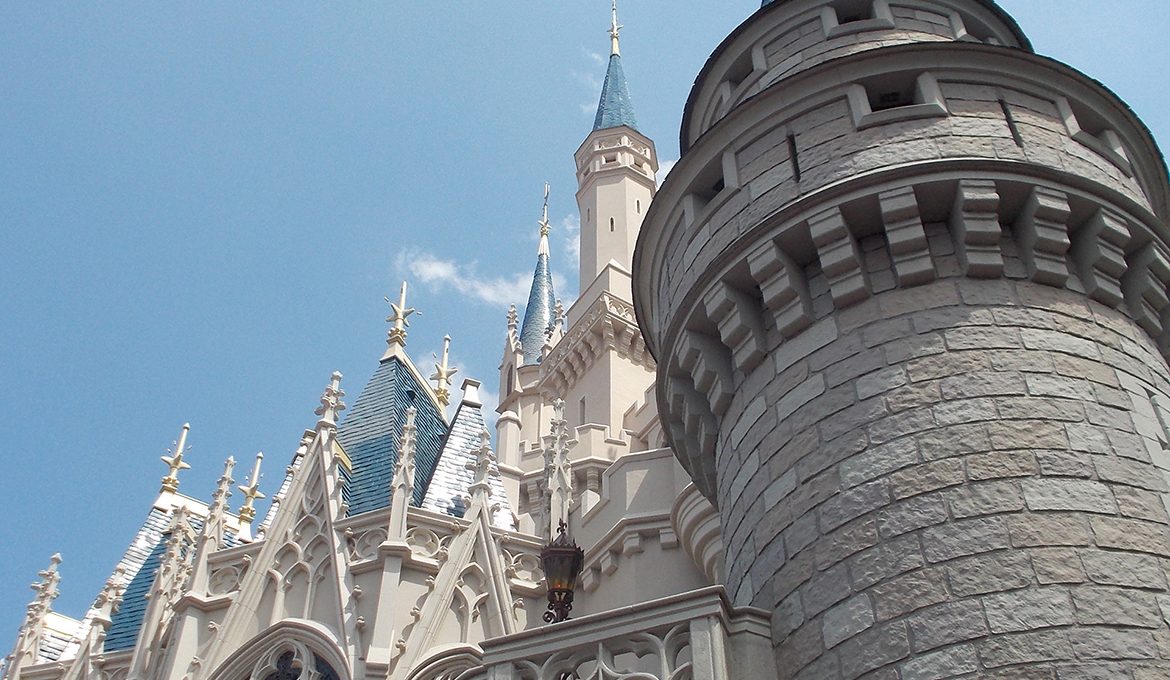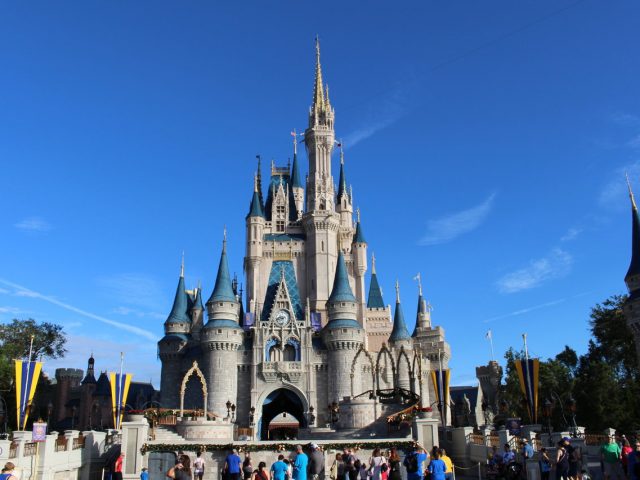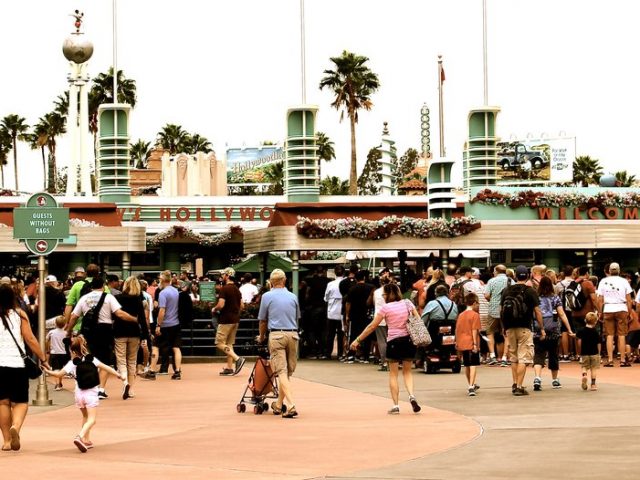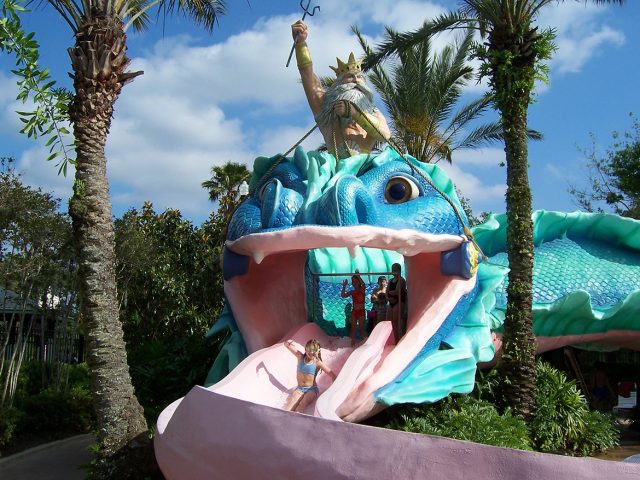Everyone wants the sweet spot for a Walt Disney World vacation, which means good weather and the ability to see it all. Unfortunately, there is no perfect time to visit. Every month has its pros and cons. Before you choose a date, take a minute to learn about the weather and crowd patterns you are likely (but not guaranteed) to encounter.
Each month is broken down into five categories:
Weather: This category highlights the average daytime temperatures, humidity, and rain. If you are someone who refuses to pack a jacket, don’t pick January to visit. If you can’t stand to sweat, then stay away from July. Bring the right gear if you are coming during the rainy season.
Crowds: This section explains attendance patterns. Disney is a gathering place; it will feel crowded no matter what time of year you visit. If you are visiting for thrill rides like Space Mountain, Tower of Terror, or Test Track, then high attendance days are going to impact you more than someone visiting to see classic attractions like the World Showcase, Hall of Presidents, or Kilimanjaro Safaris.
Swimming: Here, you’ll find a few observations about resort pools. Getting out of the parks and into the pool has saved many vacations.
Pros and Cons: They touch on budget and other special considerations.
So, keeping all these factors in mind, let’s discuss…
January & February
Weather: Temperatures are in the high 60s to low 80s during the day, but nights and mornings are cold, so bring clothes that will keep you warm in 50-degree weather. Humidity and rainfall shouldn’t be a problem.
Crowds: Expect high crowds on New Year’s Day (and any school break days to follow), medium crowds for the Martin Luther King weekend, Disney Marathon weekend, and President’s Day weekend, and low crowds all other times.
Swimming: Unless you’re a kid or someone who loves to swim, you probably won’t do much swimming for pleasure. Yes, the pools are heated, but getting out can be chilly. Bring your suit for quick dips or to enjoy the hot tub.
Pros: The parks remain decorated for Christmas the first couple of weeks in January, so you get the Disney Christmas magic without the colossal December crowds. Resort prices are at their lowest in January and at the very beginning of February. Crowds are at their lightest these weeks, too.
Cons: If you are flying to Florida from a snowy climate, you may face delays coming or going. If you just had your kids home for two weeks of winter break, it may not be a convenient time to travel. You may not get the warm Florida weather you desire. Cold snaps can happen. Resort prices spike for President’s Day week.
March & April
Weather: The weather is at its best. Temperatures are in the low 70s to high 80s. Humidity and rainfall are low.
Crowds: Two words—Spring Break. Crowds are Big.
Swimming: Swimming is pleasant, and because the parks are crowded, you will crave time away from the chaos with afternoon pool breaks. Use the quiet pool at your resort. It will be much more relaxing than the main pool.
Pros: If spring break is your only option, don’t rule it out. Yes, the parks are crowded, but you will find that Disney has all hands on deck. A prime number of Cast Members will be available to guide you to where you want to go, what you want to eat, and what you want to buy. Take advantage of Disney’s Extra Magic Hours (additional hours of operation only open to resort guests) and invest in Genie+ and Lightening Lanes. Get up early and make it to the park right as it opens. Believe it or not, you can get a lot in with an early park entry. That leaves you the opportunity to head back to your resort for lunch, swimming, and naps during the crowded afternoons. Plan to return to the parks when crowds lessen in the evening to catch any attractions you missed and some fireworks.
Epcot’s International Flower and Garden Festival begins in March, and it is the most beautiful time to visit Epcot. (Note: a great time for garden lovers and photographers.)
Cons: If you are not a morning person and cannot deal with large crowds and waiting in line, March and April may not be for you. Resort costs are at peak levels and you’ll pay more to see the parks.
May
Weather: Temperatures begin to rise into the high 80s and low 90s. Humidity starts to set in. The rainy season is about to begin.
Crowds: They aren’t too bad. Mornings are generally light, and afternoons are moderate.
Swimming: Perfect. Disney resort pools are the best around (especially the sand-bottom pool shared by the Beach Club and the Yacht Club). They are large, many are zero-depth, and some have splash pads or play structures embedded right into them.
Pros: The Flower and Garden Festival hits a beautiful peak. This is an excellent time for people without children or without school-age children to visit. Resort costs are in the middle of the road.
Cons: May gets heat waves. You could land on an unlucky week and feel like you’re hitting the parks in August. It’s an inconvenient time for families with kids in school to travel.
June
Weather: This is when 90-degree weather and humidity are the norm. It is the start of the rainy season, so prepare for rain every day. If you are lucky, the sky will open up at 3 p.m., pour for a good hour, and then be done. If you are not lucky, it will rain buckets all day.
Crowds: Crowds are moderate in the first two weeks and high in the last two weeks.
Swimming: The pool is your friend. Go early to the parks and return to your pool oasis for the afternoon. In the evenings, go back to the parks.
Pros: Keep in mind the rain can be your ally. For example, the Magic Kingdom has way more indoor or partially covered attractions than outdoor attractions. More critical, outdoor rides don’t necessarily close when it rains. Despite that, many guests leave the parks when wet weather hits. If you can throw on a poncho and make the best of it, you’ll enjoy shorter waits. Visiting one of the Disney water parks is highly recommended for non-rainy days.
Cons: You’re going to be hot. You’re going to sweat. You’re going to have plans thwarted by rain. June is also the first month of hurricane season, which sometimes causes airline delays. Disney resort prices increase for the summer.
July & August
Weather: July and August are the hottest months of the year. Temperatures are in the mid-90s, and heat indexes make it feel even hotter. High humidity and rain appear almost daily.
Crowds: The highest crowds of summer are mid-June to mid-August. On the Fourth of July, the Magic Kingdom can close for capacity. On the flip side, crowds drop tremendously during the last two weeks of August. It’s a good time to go if you can handle the heat.
Swimming: The shallow pools heat up quite a bit and feel more like hot tubs. If thunder is reported nearby, the pools will be closed even if it’s not raining. Unfortunately, Florida has the country’s most lightning strikes and lightning-related deaths. Make a Disney waterpark part of your plans.
Pros: These months are the most convenient months for families to travel. Disney lowers prices at its deluxe resorts in July and all other resorts in mid-August. Summer is a great time to visit a Disney water park.
Take heart; tons of indoor Disney attractions will keep you safe from the heat. Book Lightening Lanes for these indoor rides during the hottest parts of the day and catch any shows or movies taking place in air-conditioned theaters. Make lunch reservations at sit-down restaurants rather than grab-and-go locations to relax and cool off in air-conditioned comfort at midday. If you are lucky enough to be in Disney on the Fourth of July (and sometimes the day before), you will be treated to one of the best fireworks displays in America. No one celebrates the Fourth of July like Disney.
Cons: It’s hot, it’s rainy, and parks are at capacity. Value and moderate resort prices remain high through mid-August.
September
Weather: Temperatures are in the high 80s and low 90s. Always be prepared for rain.
Crowds: Levels are low after Labor Day.
Swimming: Great (see May).
Pros: Choose September if you want to extend that “summer feeling” another week. Resort prices are at their second lowest level of the year. September includes the Epcot International Food and Wine Festival, an enjoyable event for those who love trying new foods. This is a great time to visit without kids because you can indulge in the festival, sleep in the following day, and take in the parks from a grownup’s perspective or lounge poolside in the afternoon.
Cons: It can still be brutally hot during the day. If you have kids in school, it’s not a convenient time to travel.
October & November
Weather: Temperatures drop into the 80s in October and a few degrees cooler in November. The rainy season is over.
Crowds: October is becoming a popular time to visit, so regulars report that the month is much more crowded than it used to be. The week of Thanksgiving is absolutely nuts.
Swimming: The heated pools make it comfortable to swim, though it can be a little chilly when you get out.
Pros: The holidays and Disney go hand-in-hand. October’s popularity is rising because Walt Disney World does a fantastic job decorating for Halloween. The Magic Kingdom also hosts Mickey’s Not-So-Scary Halloween parties on select nights, where many flock to trick-or-treat or witness the ride of the headless horseman. The Epcot International Food and Wine Festival runs until mid-November.
Once Halloween passes, Disney transforms practically overnight into a Christmas wonderland. November hosts the first Mickey’s Very Merry Christmas parties. Resort pricing is reasonable, second only to January’s low pricing.
Cons: It may not be as warm as you’d like Florida to be. With the holidays, it’s a difficult time for families to travel. Lines for Epcot’s festival can get pretty long in the evenings, and the atmosphere can be a little more adult and rowdy (wait, maybe that’s a pro?). The week of Thanksgiving is extra busy.
December
Weather: December is the second coldest month of the year, but you’ll see plenty of daytime temperatures in the 70s and 80s. Mornings and nights can be chilly, so bring appropriate clothing. Hurricane season is over.
Crowds: Attendance is low until the school winter break. The two weeks surrounding Christmas and New Year’s Day are the most crowded of the year.
Swimming: Swimming probably won’t be your priority, but you never know. Bring a suit, just in case.
Pros: No two things go together better than Disney and Christmas. You get Mickey’s Very Merry Christmas parties, the Candlelight Processional, and the most incredible Christmas decorations EVER! If you can manage a December trip before schools let out for winter break, DO IT! The parks are decorated beautifully, and that legendary Disney magic is in overdrive. Of course, the winter break for most school-age children makes the end of December an extremely convenient time for families to travel.
Cons: Not only are the last two weeks of December the most crowded, they are the most expensive.
So, no matter your preferred time of the year to travel, you can make a Disney vacation work with a bit of prep, planning, and sensible packing. You just have to find the right mix that works for you!
Thanks for Popping In!
Have a question or a suggestion for a future post? Email us at mainstreetpopin@gmail.com
Follow MAIN STREET POP IN on
facebook instagram




